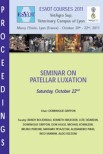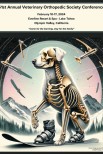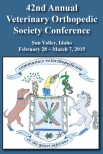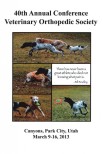Objective—To report surgical treatment of traumatic lateral patellar luxation using trochlear block recession in an alpaca.
Study Design—Clinical case report.
Animals—Five-year-old female alpaca.
Methods—Grade IV/IV lateral, left patella luxation and mild femoropatellar joint effusion was identified by palpation and visual assessment, and confirmed by ultrasonography and radiographs. Trochlear block recession combined with lateral retinacular release and medial imbrication to restore patella function.
Results—Progressive improvement in weight bearing occurred during hospitalization (6 days) and at 3.5 weeks, no lameness was observed; radiographically, the patella was in normal anatomic alignment. At 15 months, there were no signs of lameness with unrestricted exercise and the alpaca had given birth to another cria.
Conclusions—In this alpaca with traumatic origin of the lateral patellar luxation and normal femoro-tibial alignment, a combination of retinacular imbrication, contralateral release, and trochlear block recession were successful for long-term treatment of lateral patellar luxation.
Clinical Relevance—Although trochlear block recession is most commonly performed in small animals, this technique may be useful in treatment of traumatic patellar luxations in camelids.









